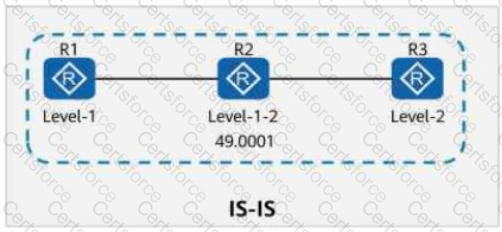Comprehensive and Detailed In-Depth Explanation:
Understanding the IS-IS Levels and Default Route Advertisement:
R1 is a Level-1 router
R2 is a Level-1-2 router (meaning it connects both Level-1 and Level-2 areas)
R3 is a Level-2-only router
Step 1: What Does "default-route-advertise always level-1" Do?
This command forces R1 to advertise a default route (0.0.0.0/0) to all its Level-1 IS-IS neighbors, regardless of whether R1 has a default route in its routing table.
Since R1 is a Level-1 router, it does not participate in Level-2 routing, meaning it relies on R2 (a Level-1-2 router) for external connectivity.
Step 2: Checking the Routing Tables
R1: Since it is only a Level-1 router and does not receive a default route from any higher-level router, it does not have a default route in its own routing table. ✅ (D is correct)
R2: Since R1 advertises the default route at Level-1, R2 (a Level-1-2 router) receives this default route in its Level-1 database. ✅ (B is correct)
R3: R3 is a Level-2-only router, and default routes are not automatically leaked between Level-1 and Level-2 unless explicitly configured.
Since no explicit route leaking configuration is mentioned, R3 will not have the default route ❌ (C is incorrect).
A is incorrect because the command successfully advertises a default route from R1 to Level-1 neighbors like R2.
Final Answer: ✅ B, D
References:
HCIP-Datacom-Advanced Routing & Switching Technology V1.0 – IS-IS Default Route Advertisement
IS-IS Routing Level-1 and Level-2 Behavior
IS-IS Route Leaking and Default Route Propagation

Submit